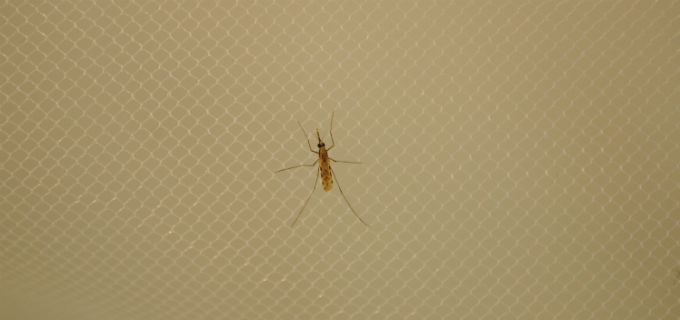
News
Search for news
Local Climate Alters the Effectiveness of Malaria Vector Control Tools
ISGlobal researchers participated in this study published in PLoS Pathogens
04.10.2013
A study published in PLoS Pathogens, led by Krijn Paaijmans, researcher at CRESIB, the research center of ISGlobal (Barcelona Institute for Global Health), focuses on increasing the effectiveness of chemical tools in our fight against malaria mosquitoes.
Malaria vector control currently relies almost exclusively on killing adult mosquitoes with chemical insecticides. While insecticide-treated nets, long-lasting insecticide-treated nets (LLINs), and indoor residual sprays (IRS) are very successful in reducing disease incidence and mortality, insecticide resistance is on the rise and a resurgence of malaria is feared. To mitigate the effects of resistance, the development of new insecticides and formulations for use in LLINs and for IRS remains a research priority. In their paper the researchers argue that, to increase the effectiveness of the arsenal of chemicals available, it is necessary to consider the relevant microclimatic conditions in which these tools are deployed.
Paaijmans explains, "The underlying thought is simple: insecticides used in public health for vector control kill mosquitoes by interfering with the nervous system. Mosquito metabolic activity, which is involved in degradation of insecticides, and nervous system sensitivity itself are highly temperature-dependent. Thus, temperature has the potential to affect the toxicity of a chemical."
Temperature and insecticide effectiveness
Whilst temperature is acknowledged to be an important factor in insecticidal control of pests in crop systems, the World Health Organization Pesticide Evaluation Scheme (WHOPES) recommends that mosquitocidal compounds and products for phase I trials be tested at 25-27°C. "But nighttime conditions, when malaria mosquitoes are active, are often much cooler," Paaijmans argues. "By testing insecticidal performance under standard laboratory conditions, there is the possibility that we currently eliminate compounds in the testing phase that may perform very well in the field. Second, without information about their action at different temperatures, we may deploy chemicals that will be less efficient than we expect under actual field conditions."
Katey Glunt (Center for Infectious Disease Dynamics and Department of Biology, The Pennsylvania State University) adds, "Vector control chemicals are typically applied at concentrations meant to overwhelm variation in susceptibility. But evidence, from the field, shows that the ability of LLINs or IRS to kill mosquitoes can decrease rapidly after deployment. To maintain effective control for as long as possible between applications, it is important to consider what insecticides are likely to be most effective in a given local environment. Temperature, for example, influences the toxicity of some insecticides, but is less important for others; more testing is needed in order to understand how current tools are affected by local conditions."
The authors discuss similar issues for insecticide resistance screening and for the development of odor-baited traps. Paaijmans concludes, "Chemicals are powerful tools in the control of malaria and other vector-borne diseases such as dengue, leishmaniasis and Chagas disease. But, to increase the effectiveness of the chemical toolbox for vector control, the temperature coefficient of chemicals need to be considered from the outset of testing."
Reference:
KD Glunt, JI Blanford & KP Paaijmans. Chemicals, climate and control: Increasing the effectiveness of malaria vector control tools by considering relevant temperatures.PLoS Pathogens. DOI: 10.1371/journal.ppat.1003602
Learn More
How Many Mosquitoes Are Killed by Insecticides?, by Krijn Paaijmans





